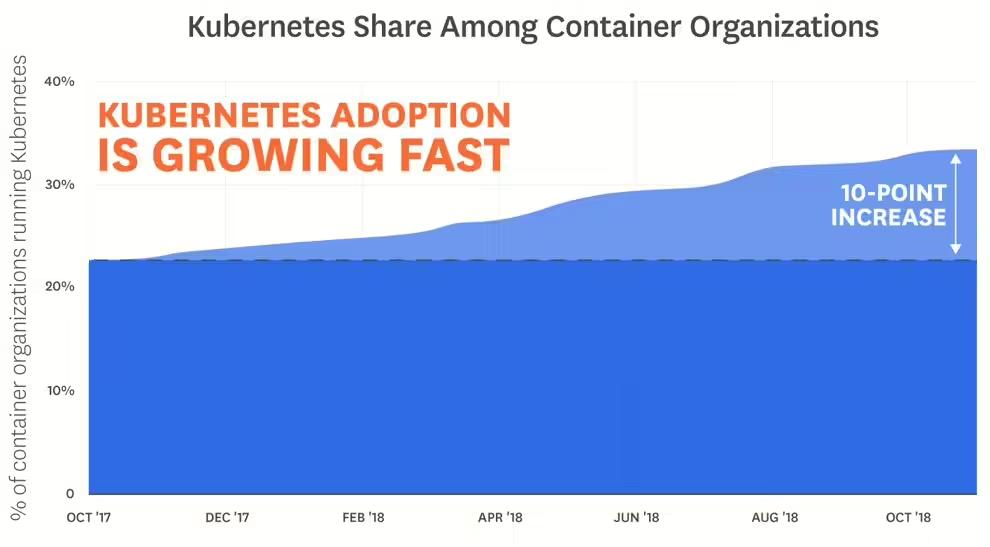Kubernetes, often abbreviated as K8s, is an open-source container orchestration platform designed to automate the deployment, scaling, and management of containerized applications. For example, organizations use Kubernetes to manage microservices architectures, ensuring seamless scaling of applications like online retail platforms during high-traffic events such as holiday sales. To fully understand what programming language Kubernetes uses, it is essential to delve deeper into its core components, ecosystem, and development history.
The Primary Language: Go (Golang)
Kubernetes is predominantly written in Go (Golang). Go is a statically typed, compiled language developed at Google, renowned for its simplicity, performance, and ability to handle concurrent programming effectively.

Kubernetes’ adoption of Go as its primary language is grounded in several key reasons:
-
Concurrency: Kubernetes orchestrates multiple containers and clusters simultaneously. Go’s native support for goroutines and channels makes it exceptionally suited for high-concurrency tasks. Goroutines are lightweight threads that allow multiple functions to run concurrently without the heavy resource overhead of traditional threads. Channels, on the other hand, provide a safe and efficient way to communicate between goroutines, enabling synchronized operations across various components.
-
Performance: As a compiled language, Go provides high performance with minimal runtime overhead, a crucial factor for a complex and resource-intensive system like Kubernetes.
-
Simplicity: Go’s clean syntax and straightforward design enable developers to write and maintain code efficiently, which has been instrumental in encouraging collaboration within the vast Kubernetes community.
-
Standard Library: Go boasts an extensive standard library that includes powerful tools for networking, HTTP servers, and cryptography—features integral to Kubernetes’ core operations.
The Kubernetes repository on GitHub (“kubernetes/kubernetes”) highlights its predominantly Go-based codebase, reflecting the language's critical role in the project.
How Go Shapes Kubernetes
Several key features of Kubernetes leverage Go’s strengths, showcasing why it has been such a pivotal choice:
- Custom Resource Definitions (CRDs): Go’s ability to define custom types facilitates the extension of Kubernetes APIs, allowing developers to create bespoke resources tailored to their specific needs.
- Controllers: Written in Go, these controllers operate as control loops, continuously monitoring and reconciling the desired and actual states of the cluster.
- Networking and APIs: The Kubernetes API server, a cornerstone of cluster communication, is deeply rooted in Go’s networking and concurrency features.
Additional Languages in the Kubernetes Ecosystem
While Go serves as the backbone of Kubernetes, its expansive ecosystem incorporates other programming languages to address a variety of roles and needs. These languages include:
-
Python:
- Python is commonly employed in Kubernetes-related tools, such as
kubectlplugins, CI/CD pipelines, and custom operators. For instance, thekubernetes-clientPython library, also known askubectl-py, allows developers to interact programmatically with Kubernetes clusters to automate tasks like deployment management and resource scaling. - Its widespread use and extensive libraries make it a go-to language for scripting and automation within the Kubernetes community.
- Python is commonly employed in Kubernetes-related tools, such as
-
JavaScript and TypeScript:
- Many web interfaces and dashboards for Kubernetes, including the official Kubernetes Dashboard, are developed using JavaScript or TypeScript. These languages provide the interactivity and responsiveness needed for user-facing tools.
-
Bash:
- Shell scripting, primarily with Bash, is heavily relied upon for automation tasks, bootstrap scripts, and initial cluster setup processes.
-
Rust:
- Emerging projects within the Kubernetes ecosystem are increasingly exploring Rust. Known for its memory safety and performance, Rust powers tools like Linkerd, a service mesh often used alongside Kubernetes.
The Expanding Role of the Community

Kubernetes’ widespread adoption and success owe much to its large and dynamic open-source community. Contributions come in various languages, with Go being the cornerstone for core components and other languages extending the platform’s functionality. The inclusion of multiple languages demonstrates Kubernetes’ adaptability and its openness to innovation. By leveraging languages like Go for core operations, Python for scripting, JavaScript for user interfaces, and Rust for emerging projects, Kubernetes appeals to a wide range of developers with diverse skill sets. This multifaceted approach fosters innovation, enabling seamless integration of tools and encouraging contributions from various domains of expertise.
Community-driven projects frequently expand Kubernetes’ capabilities, creating tools, integrations, and workflows that cater to the evolving needs of the DevOps world. This collaborative environment ensures that Kubernetes remains at the forefront of container orchestration technology.
Conclusion
Kubernetes is primarily written in Go, a language that delivers the performance, simplicity, and concurrency required for a resilient and efficient container orchestration platform. However, Go does come with its own set of challenges, such as limited generics support prior to recent updates and the absence of a robust dependency management system early in its development, which required workarounds like vendoring. Nevertheless, its vibrant ecosystem incorporates Python, JavaScript, Bash, and Rust, enabling a wide array of tools and extensions. By understanding Go’s centrality in Kubernetes’ architecture and the contributions of other languages, developers and operators can better appreciate the platform’s design, flexibility, and enduring appeal.
